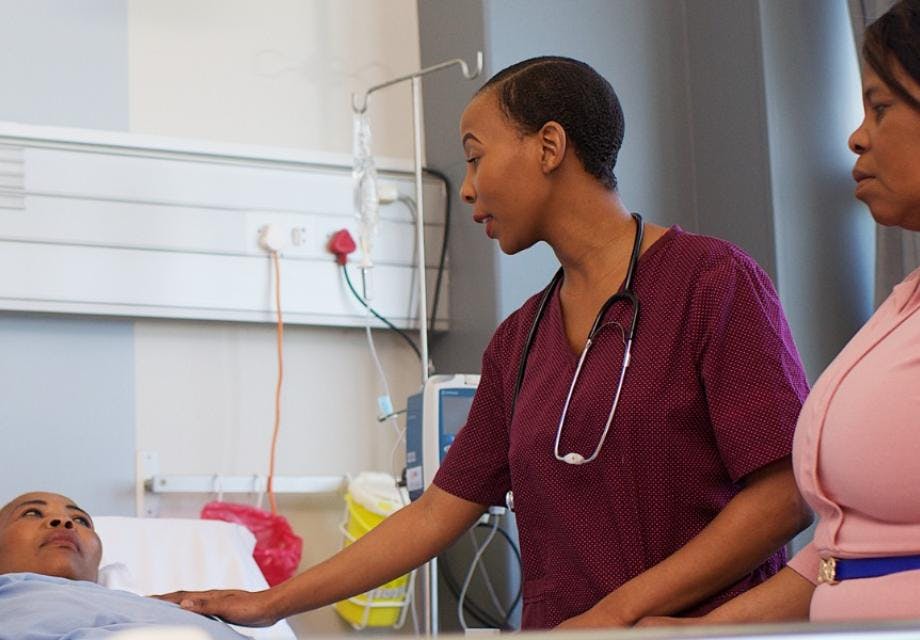WHO releases new guide on care for seriously ill people with HIV
Hester Phillips
10 May 2023
Global health body outlines the key things that need to happen to stop preventable AIDS-related deaths
The World Health Organization (WHO) has put all its guidance on hospital care for people with advanced HIV in a new brief, covering everything from screening through to treatment and aftercare.
What is this story about?
The care that people with advanced HIV (when someone’s CD4 cell count is less than 200) should get when they are in hospital and after they leave it.
Why is this important?
People with advanced HIV are at very high risk of opportunistic infections, such as TB, and death. About one fifth of people with HIV who go into hospital with an opportunistic infection die. Of those who leave hospital, nearly a third die or are readmitted within a year.
What does the guidance say?
Screening and diagnosis
Many people with advanced HIV who are hospitalised already know they have HIV. Those who don’t should be offered an HIV test. Everyone with HIV who is hospitalised should have a CD4 count test.
If people have been taking antiretroviral treatment (ART) for six months or more, a low CD4 cell count means their treatment might be failing. People experiencing this should have viral load monitoring. WHO or local guidelines should be followed to manage treatment failure (for example, by changing HIV medication).
Anyone hospitalised with HIV should be tested for TB. Adults and adolescents should also be screened for cryptococcal disease. Children should only be screened for cryptococcal disease if they have meningitis symptoms. Other tests should be based on people’s symptoms. The guidance outlines the most common HIV-related conditions to look for.
Treatment for common co-infectious and conditions
The guidelines give recommended treatments for TB, cryptococcal meningitis and severe bacterial infections. These are the most common causes of hospitalisation for people with HIV. It also outlines treatment for 13 other HIV-related conditions. These include pneumonia, Kaposi’s sarcoma, meningitis, COVID-19 and mpox.
Before leaving hospital, people with HIV should get treatment that protects them from common co-infections, such as TB.
Whether someone is hospitalised with an illness they can recover from or whether it is life-limiting, they should get care that reduces their pain and suffering, manages any disabilities they have, and is in line with what they and their families want.
HIV treatment
Most people hospitalised with HIV who are not on ART should start it as soon as possible. However, people with TB meningitis or cryptococcal meningitis should not start ART until they having four to six weeks of meningitis treatment.
People who have taken ART before but are not on it when they are hospitalised should restart on a dolutegravir-based regimen. They should get advice and support to help them stay on treatment.
People who start ART in hospital need to be closely monitored. If they have a severe reaction to ART, they should stop taking it until this reaction goes.
Links between clinics and hospitals
When someone is referred to hospital from a clinic, the two facilities need to communicate about that person’s care, especially about ART and viral load monitoring.
People should be linked to primary care for follow-on treatment when they leave hospital. There should be clear communication between the hospital and the primary care clinic about this.
People should be given enough medication (including ART) when they leave hospital to avoid treatment gaps.
What does this mean for HIV services?
This gives clear guidance on what healthcare providers should do when people with HIV become seriously ill. It can be used to advocate for people’s rights when they are in hospital, especially if they are too unwell to advocate for themselves.
It is important to encourage people to test for HIV and start treatment to avoid developing advanced HIV in the first place. This is the best way people with HIV can look after their health. Community-based organisations can play a vital role in getting people to test for HIV, and in encouraging people with HIV who are unwell to seek care.
The brief shows how important it is to support people after they leave hospital. This can be done through things such as food and nutrition support, support to stay on ART and any other treatment, and support to seek further medical care if needed. Giving people guidance on how to look after their health after leaving hospital and calling or visiting them regularly can be effective support strategies.
Get our news and blogs by email
Keep up-to-date with all our latest news stories and blogs by signing up to the Be in the KNOW news digest.
